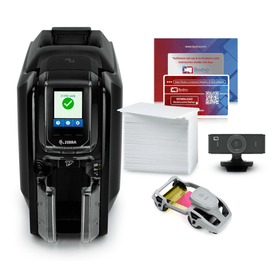The word encoding refers to a process by which data is stored in the components of an ID card. The card can hold small to large volumes of data in many different ways, including simple and complex ways. Every single card encoding technique is made to accommodate specific quantities and types of data. Each card encoding form necessitates appropriate software as some ID printers ID card software programs can handle just limited encoding capabilities. With that in mind, let us discuss some encoding options available for ID card printers.
Barcode Encoding
The simplest and the most prevalent way of storing data on ID cards is with barcodes. Almost any form of identity card software is capable of encoding barcodes, irrespective of its sophistication level. It is possible to print barcodes on any form of ID card using basic software programs and without special ribbons.
When your barcode reader scans the barcode, it will link to the data stored in the code through a system interface. It will access or retrieve the detailed cardholder, product or account information, or barcode-related instructions. Data gets stored in static form in barcodes, and it is impossible to rewrite it. Personal data like the cardholder’s name, employee number, department, address, training status, access authorizations, portrait or biometric fingerprint data, and expiration date can be stored.
Magnetic-Stripe Encoding
The phrase magnetic stripes refer to a decades-old and ubiquitous method of ID card data encoding. Creating ID cards thus requires a purpose-built card stock, an ID card printer that has magnetic-stripe-based printing capabilities and a software program that can encode. Therefore, comparatively, magstripe printing is marginally more costly than barcode printing.
A magnetic stripe comprises ferromagnetic particles inside a film that is applied on an area of the card. The party that issued the card determines custom data, which is entered to the printing software and stored on the magnetic stripe in the printing process. There are different types of data stored on different forms of data tracks in the stripe. This data is read or activated as the stripe or card passes through an access point console reader, translating the data stored into a form that can be put to use.
Magstripe encoding is a common method. Therefore, almost every current or standard ID card program supports this function. Nonetheless, it is vital to confirm that an entry-level card software program has the magstripe encoding feature.

















